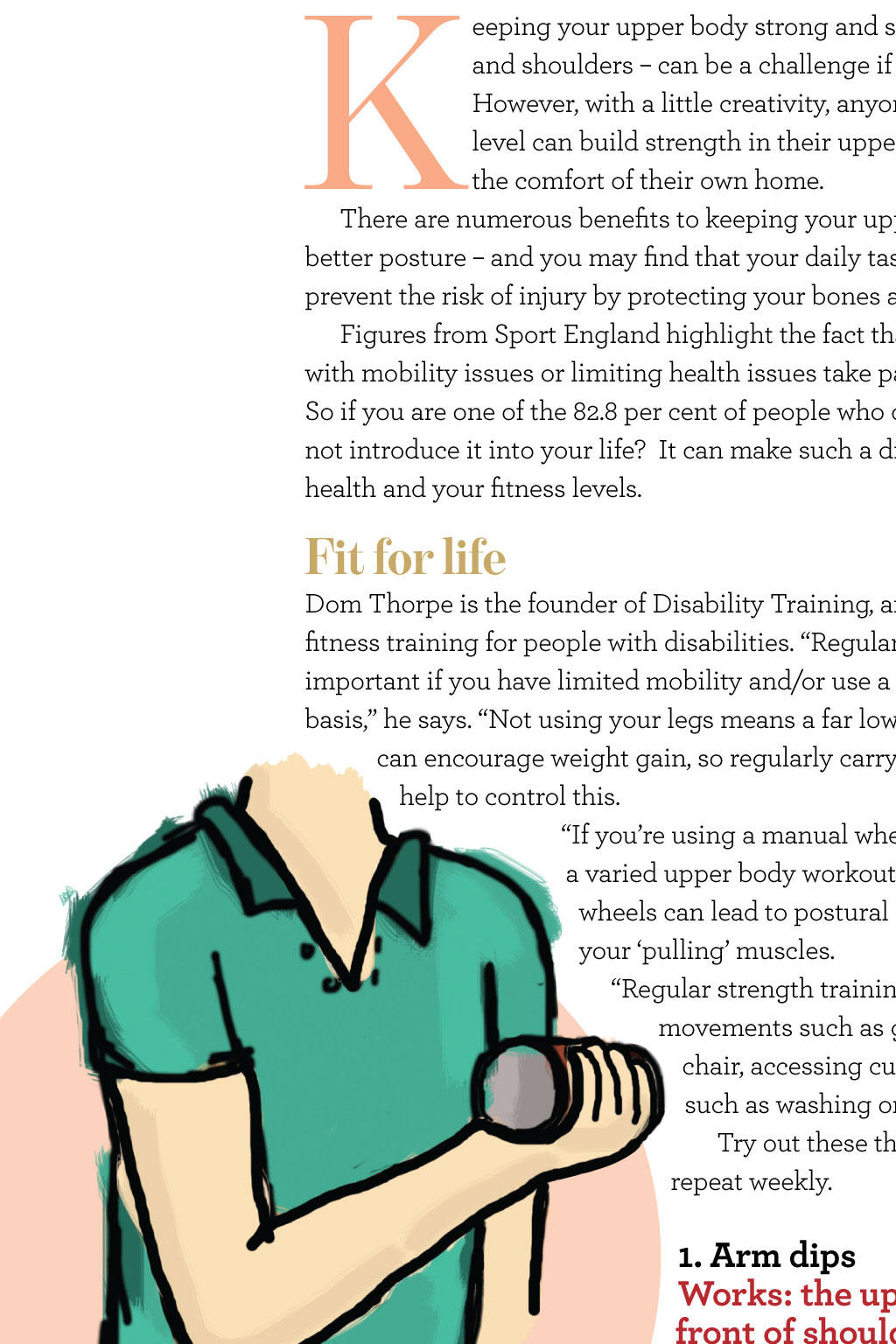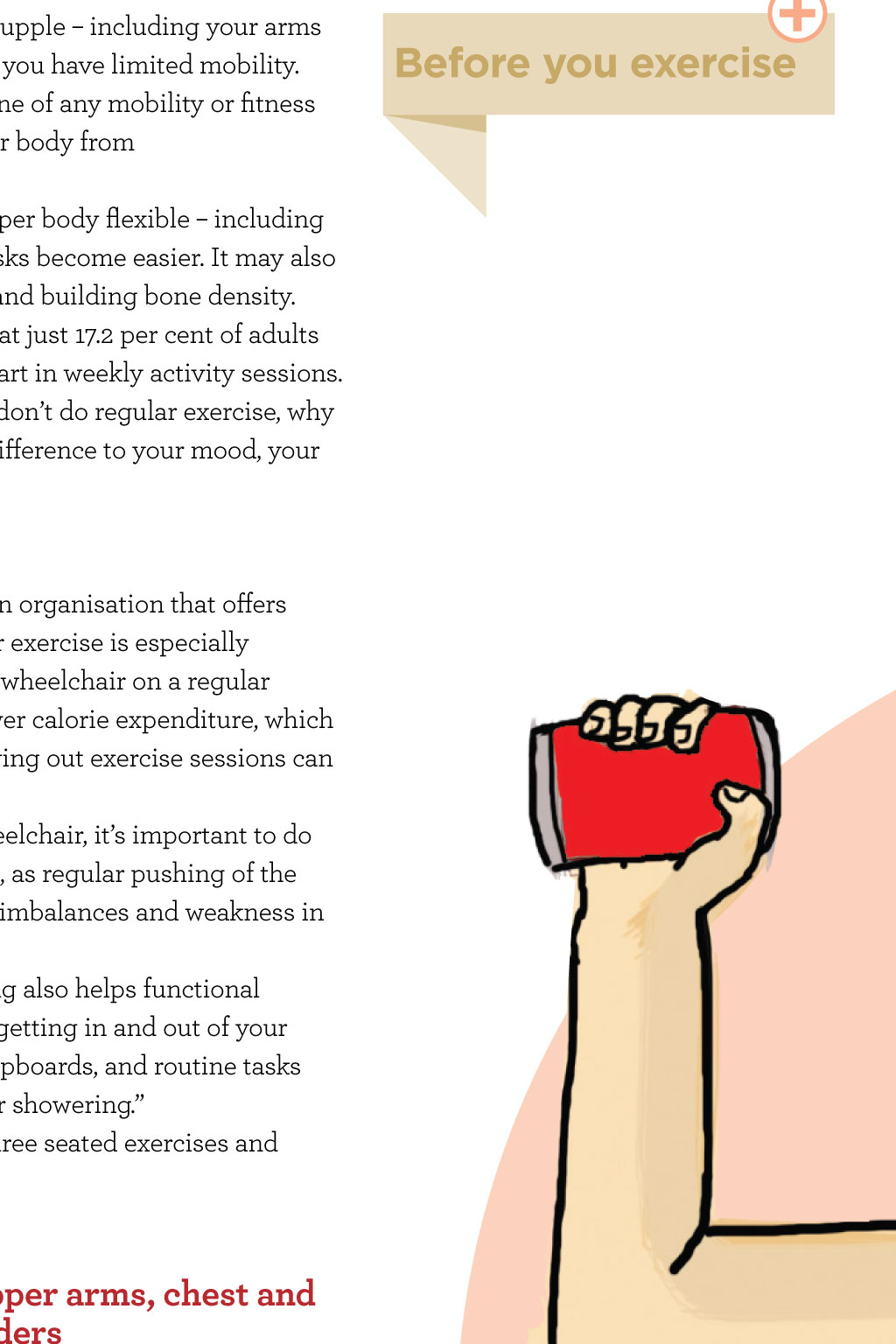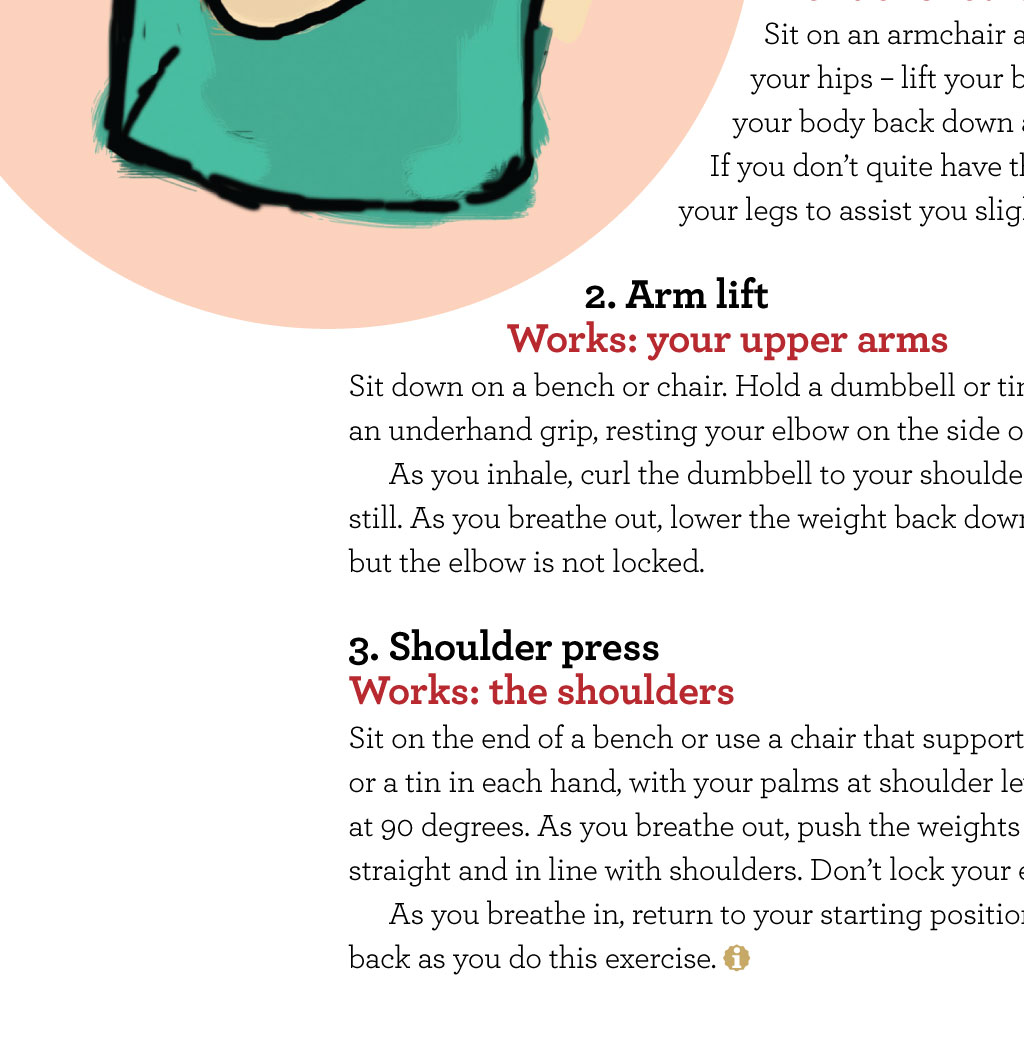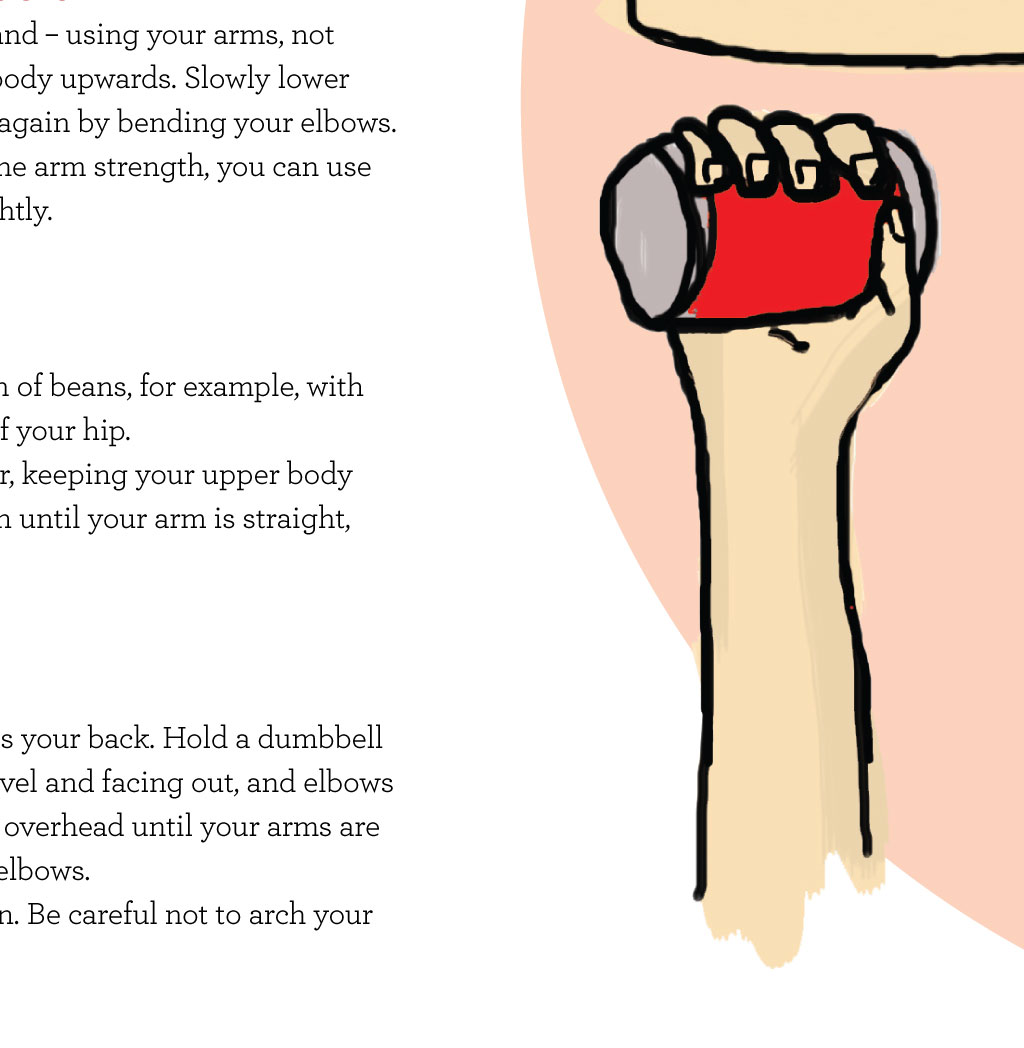












Fitness Give your health a lift Building strength and flexibility in your upper body is great for your posture, among other things. Heres what you can do at home Words: sarah JuGGins illustrAtions: hazel stabler K eeping your upper body strong and supple including your arms and shoulders can be a challenge if you have limited mobility. However, with a little creativity, anyone of any mobility or fitness level can build strength in their upper body from the comfort of their own home. There are numerous benefits to keeping your upper body flexible including better posture and you may find that your daily tasks become easier. It may also prevent the risk of injury by protecting your bones and building bone density. Figures from Sport England highlight the fact that just 17.2 per cent of adults with mobility issues or limiting health issues take part in weekly activity sessions. So if you are one of the 82.8 per cent of people who dont do regular exercise, why not introduce it into your life? It can make such a difference to your mood, your health and your fitness levels. Fit for life Dom Thorpe is the founder of Disability Training, an organisation that offers fitness training for people with disabilities. Regular exercise is especially important if you have limited mobility and/or use a wheelchair on a regular basis, he says. Not using your legs means a far lower calorie expenditure, which can encourage weight gain, so regularly carrying out exercise sessions can help to control this. If youre using a manual wheelchair, its important to do a varied upper body workout, as regular pushing of the wheels can lead to postural imbalances and weakness in your pulling muscles. Regular strength training also helps functional movements such as getting in and out of your chair, accessing cupboards, and routine tasks such as washing or showering. Try out these three seated exercises and repeat weekly. 1. Arm dips Works: the upper arms, chest and front of shoulders Sit on an armchair and using your arms, not your hips lift your body upwards. Slowly lower your body back down again by bending your elbows. If you dont quite have the arm strength, you can use your legs to assist you slightly. 2. Arm lift Works: your upper arms Sit down on a bench or chair. Hold a dumbbell or tin of beans, for example, with an underhand grip, resting your elbow on the side of your hip. As you inhale, curl the dumbbell to your shoulder, keeping your upper body still. As you breathe out, lower the weight back down until your arm is straight, but the elbow is not locked. 3. shoulder press Works: the shoulders Sit on the end of a bench or use a chair that supports your back. Hold a dumbbell or a tin in each hand, with your palms at shoulder level and facing out, and elbows at 90 degrees. As you breathe out, push the weights overhead until your arms are straight and in line with shoulders. Dont lock your elbows. As you breathe in, return to your starting position. Be careful not to arch your back as you do this exercise. before you exercise If youre not sure whether a certain type of exercise is suitable for you, check with your GP. You could also talk to a physiotherapist, to see if they can offer any specific exercises or modifications that could benefit you. Once exercising, listen to your body and stop if you feel unwell. Start off slowly and increase your repetitions, as this will build your stamina. You could even try these exercises at your local Arthritis Care branch or group. To find your nearest one, visit arthritiscare.org.uk/in-your-area n for more ways to keep active, take a look at Arthritis cares exercise and Arthritis booklet. call our Helpline on 0808 800 4050 for a free copy